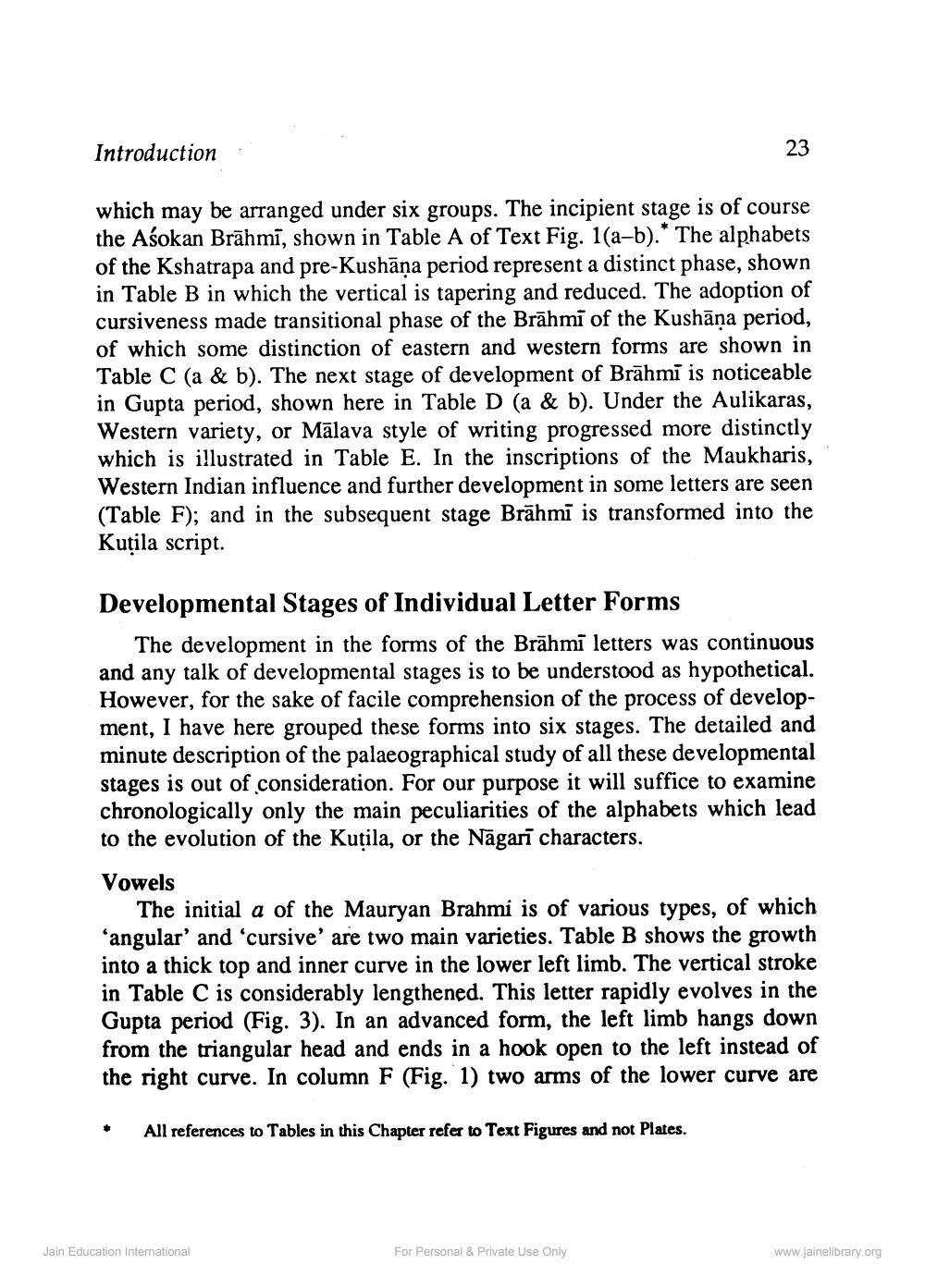________________
Introduction
23
which may be arranged under six groups. The incipient stage is of course the Asokan Brāhmī, shown in Table A of Text Fig. 1(a-b).* The alphabets of the Kshatrapa and pre-Kushāņa period represent a distinct phase, shown in Table B in which the vertical is tapering and reduced. The adoption of cursiveness made transitional phase of the Brāhmi of the Kushāna period, of which some distinction of eastern and western forms are shown in Table C (a & b). The next stage of development of Brāhmi is noticeable in Gupta period, shown here in Table D (a & b). Under the Aulikaras, Western variety, or Mālava style of writing progressed more distinctly which is illustrated in Table E. In the inscriptions of the Maukharis, Western Indian influence and further development in some letters are seen (Table F); and in the subsequent stage Brāhmi is transformed into the Kutila script.
Developmental Stages of Individual Letter Forms
The development in the forms of the Brāhmi letters was continuous and any talk of developmental stages is to be understood as hypothetical. However, for the sake of facile comprehension of the process of development, I have here grouped these forms into six stages. The detailed and minute description of the palaeographical study of all these developmental stages is out of consideration. For our purpose it will suffice to examine chronologically only the main peculiarities of the alphabets which lead to the evolution of the Kuțila, or the Nāgarī characters.
Vowels
The initial a of the Mauryan Brahmi is of various types, of which 'angular' and 'cursive' are two main varieties. Table B shows the growth into a thick top and inner curve in the lower left limb. The vertical stroke in Table C is considerably lengthened. This letter rapidly evolves in the Gupta period (Fig. 3). In an advanced form, the left limb hangs down from the triangular head and ends in a hook open to the left instead of the right curve. In column F (Fig. 1) two arms of the lower curve are
All references to Tables in this Chapter refer to Text Figures and not Plates.
Jain Education International
For Personal & Private Use Only
www.jainelibrary.org




